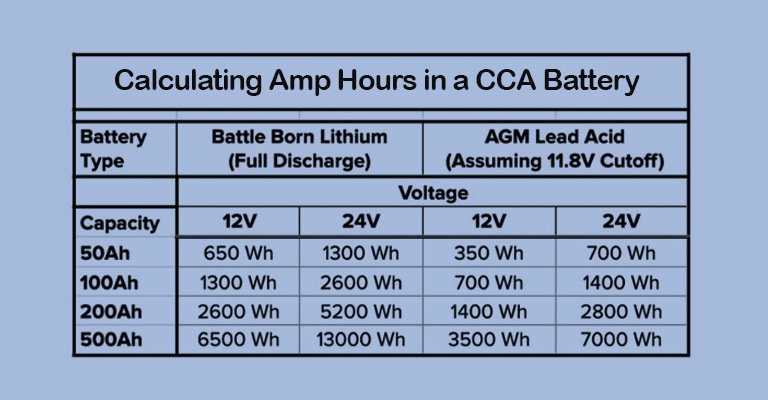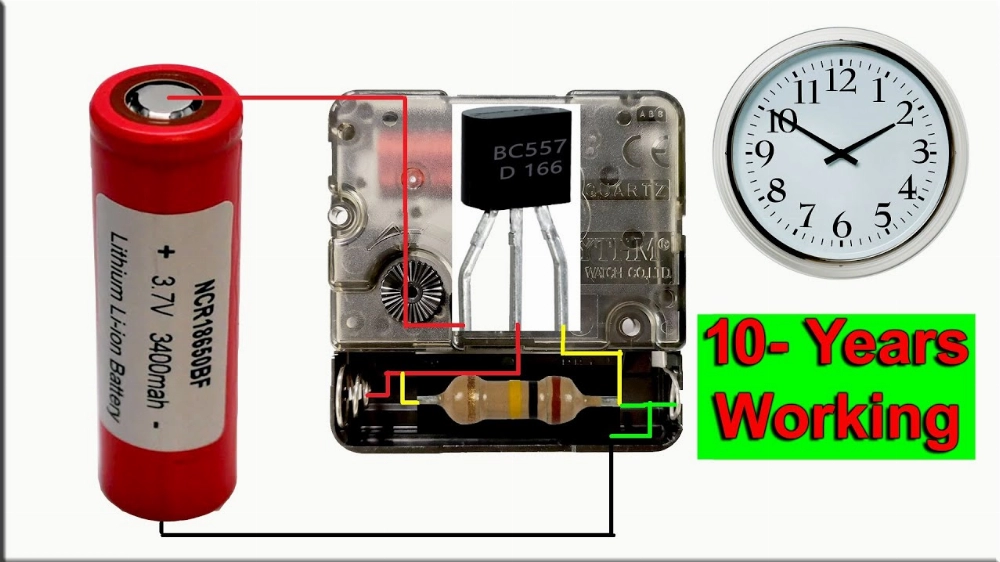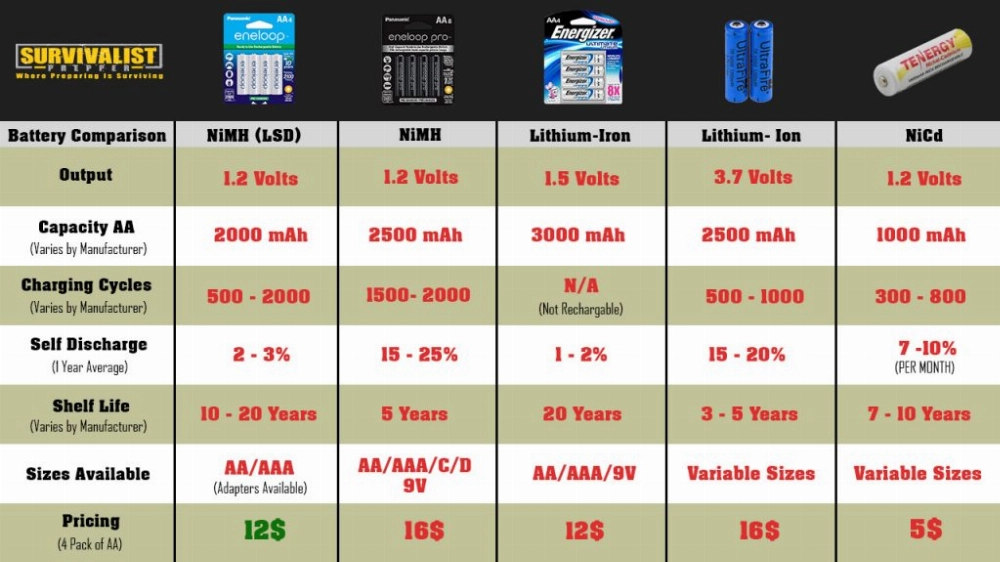Part 1: 3.6V Lithium Battery Overview
Let’s explore the fascinating world of 3.6V lithium batteries, which quietly power a variety of gadgets we use every day, ranging from trusty flashlights to high-tech medical devices. Have you ever wondered why the voltage is 3.6V? Let’s unravel this mystery together.
Why 3.6V?
The 3.6V nominal voltage isn’t arbitrary; it’s determined by the internal chemistry of the lithium battery. Lithium-ion batteries typically have a nominal voltage range of 3.6V to 3.7V. However, 3.6V batteries are designed to strike a perfect balance between power and size. Their compact form factor and ample energy make them ideal for a variety of applications.
Advantages of 3.6V
Why not 3.5V or 3.7V? The 3.6V lithium battery represents a compromise. It offers high energy density, which means it can store a lot of energy without being bulky. These batteries are also known for their long life, often lasting longer than other types of batteries, making them ideal for industrial and everyday consumer electronics.
Part 2: Differences Between 3.6V and 3.7V Lithium-Ion Batteries
You may be wondering what the difference is between 3.6V and 3.7V lithium batteries. At first glance, they seem very similar, don’t they? Let’s examine this in detail below.
In-Depth Comparison
- Nominal Voltage: 3.6V batteries have a nominal voltage of 3.6V, while 3.7V batteries have a slightly higher nominal voltage of 3.7V. This slight difference can affect performance and compatibility with specific devices.
- Full Charge Voltage: When fully charged, a 3.6V battery typically reaches up to 4.1V, while a 3.7V battery can reach up to 4.2V. This means that under the same conditions, a 3.7V battery can theoretically store more energy.
- Cycle Life: 3.6V batteries typically offer a longer cycle life, often able to undergo 500 to 1000 charge cycles before capacity begins to decline. A 3.7V battery, on the other hand, may only last 300-500 cycles.
- Energy Density: For users who need greater storage capacity, 3.7V batteries offer a slight advantage due to their higher energy density.
- Price: 3.6V batteries are generally cheaper than 3.7V batteries, making them a cost-effective option in many applications.
- Uses: 3.6V batteries are often used in industrial and medical equipment due to their high reliability and safety. 3.7V batteries, on the other hand, are more common in consumer electronics such as smartphones and laptops.
- Safety: In terms of safety, 3.6V batteries tend to offer more robust safety features, making them a better choice for critical applications where reliability is paramount.
Part 3: 3.6V Lithium Battery 18650
Now, let’s delve into the 3.6V 18650 lithium battery, a popular choice for its excellent performance.
Features
- High Capacity: These batteries typically have a capacity between 2000mAh and 3500mAh, providing ample power for a variety of applications.
- Durability: 18650 batteries are known for their long cycle life; they can be charged many times before degradation begins.
Size
The name “18650” comes from its size specifications: 18 mm in diameter and 65 mm in length. This standardized size makes it easy to replace and purchase.
Weight
An 18650 battery weighs approximately 45 grams, a moderate weight.
Applications
- Flashlights: With their high capacity, 18650 batteries are ideal for flashlights, providing bright, long-lasting illumination.
- Laptops: Commonly used in laptop battery packs, they provide reliable power for extended periods.
- Power Tools: Their reliable power output makes them a popular choice for heavy-duty applications, especially in power tools.
Part 4: 3.6V Lithium Battery AA
Next, let’s take a look at the 3.6V lithium AA battery, which is also a versatile and common choice.
Features
- Reliable Power: These batteries are known for providing stable, long-lasting power, making them ideal for a wide range of devices and applications.
For more information on choosing the best type of lithium battery, you can browse our guide: How to Choose a Lithium Battery Supplier.
Part 1: AA Batteries
Features
AA batteries are among the most widely used batteries due to their versatility and reliability. These batteries are rechargeable, offering a long-lasting and environmentally friendly solution. They can be recharged hundreds of times, making them both cost-effective and environmentally friendly.
Size
AA batteries have a diameter of 14.5mm and a length of 50.5mm, making them compatible with many household devices.
Weight
AA batteries weigh approximately 15 grams, making them lightweight and easy to handle.
Applications
- Remote Controls: AA batteries provide long-lasting power for remote controls, reducing the need for frequent battery changes.
- Toys: These batteries are ideal for powering energy-intensive toys, allowing them to run longer and ensuring endless entertainment.
- Portable Electronics: Perfect for small devices like clocks, cameras, and other everyday gadgets.
Part 2: 3.6V Lithium Battery 14500
Next, we have the 3.6V lithium battery 14500, which strikes a good balance between size and power.
Features
- High Energy Density: Despite their small size, 14500 lithium batteries offer excellent energy storage capacity, making them suitable for various applications.
- Rechargeable: These batteries can be cycled multiple times, providing exceptional value and reducing the need to purchase replacement batteries.
Size
The 14500 lithium battery has a diameter of 14mm and a length of 50mm, similar in size to an AA battery but with a different chemical composition.
Weight
These batteries weigh approximately 19 grams, slightly heavier than AA batteries but still lightweight and manageable.
Applications
- Flashlights: Due to their compact size and high energy output, 14500 lithium batteries are ideal for use in flashlights, providing bright, reliable illumination.
- Cameras: These batteries are ideal for high-powered devices like cameras, ensuring you capture every moment without worrying about battery life.
- Portable Devices: They are perfect for small electronics that require a reliable power source, including portable fans and mini speakers.
Part 3: 3.6V Rechargeable Lithium Battery
Now, let’s look at the 3.6V rechargeable lithium battery, which is popular for its numerous advantages.
Features
- Environmentally Friendly: As rechargeable batteries, these batteries help reduce waste, making them a more environmentally responsible choice.
- Cost-Effective: Over time, rechargeable lithium batteries can save you money because you don’t have to buy new batteries regularly. This makes them both cost-effective and environmentally conscious.
Size
The size of these batteries can vary depending on the type (18650, AA, 14500, etc.), accommodating different uses.
Weight
The weight also varies by type, but overall, these batteries remain lightweight and easy to handle.
Applications
- Everyday Devices: From remote controls to flashlights, these batteries are designed to provide reliable power to a variety of devices.
- Industrial Uses: They are also used in medical equipment and industrial devices because their long life and reliability ensure critical systems remain operational.
Part 4: 3.6V Lithium Battery Charger
To ensure your 3.6V lithium batteries are in good condition, using the correct charger is essential.
Charging Voltage
Typically, the charging voltage for these batteries is around 4.1V, which ensures proper charging without the risk of overcharging, helping to extend battery life and maintain performance.
Charger Types
- Smart Chargers: These chargers automatically adjust the current and voltage, optimizing the charging process and extending battery life. Many models include features like overcharge protection and temperature control.
- USB Chargers: For added convenience, USB chargers allow you to charge your batteries using any standard USB port, whether from a computer, power bank, or wall adapter.
Part 5: How Long Does a 3.6V Lithium Battery Last?
The lifespan of a 3.6V lithium battery depends on several factors:
- Usage: Devices that consume more power will drain the battery faster. For example, using the battery in a high-powered flashlight will deplete it more quickly than using it in a low-energy device. Battery life is also affected by usage patterns, such as intermittent versus continuous use.
Battery Life and Care
Understanding Battery Life
Proper battery maintenance is essential for extending its lifespan. By following best practices for storage and charging, you can improve your battery’s performance and maximize its lifespan. Avoid exposing batteries to extreme temperatures, as both heat and cold can negatively affect battery life. Additionally, overcharging can reduce battery capacity and efficiency.
Charging Cycles and Battery Longevity
Typically, lithium-ion batteries can last for around 300 to 500 charging cycles. A charging cycle is the complete process of fully discharging and then recharging a battery. After 300 to 500 cycles, the battery’s capacity will start to noticeably degrade. For most users, this equates to several years of use, making lithium-ion batteries a reliable and long-lasting power source.
Can You Replace a 3.6V Battery with a 3.7V Battery?
Compatibility Considerations
A common question regarding lithium-ion batteries is whether you can replace a 3.6V battery with a 3.7V battery. The short answer is yes, you generally can. However, there are several key points to consider before doing so.
- Voltage Difference: While the voltage difference is minimal, some sensitive electronic devices may not handle this slight increase well. Always consult your device’s specifications to confirm compatibility. Using a 3.7V battery in a device designed for 3.6V could affect performance or even damage internal components.
- Safety and Quality: It is crucial to ensure that the replacement battery is of high quality and purchased from a reputable source. Low-quality batteries may pose safety risks, perform poorly, or lead to hazardous situations. Always prioritize safety when selecting a replacement battery.
Conclusion
3.6V lithium batteries are widely used in various devices, such as remote controls, flashlights, and industrial tools. They are known for their versatility, reliability, and impressive lifespan. Understanding the differences between 3.6V and 3.7V batteries is key to making informed decisions based on your specific needs. Regardless of the voltage you choose, proper care and quality considerations will ensure a longer, safer, and more efficient battery experience for your devices.
Related Topics:
- How to Safely Clean Corrosion from Battery Leakage
- Portable Charger vs. Power Bank: What’s the Difference?
- The Ultimate Guide to Using a Lithium-Ion Jump Starter
- What is a Portable Charger?
- How to Choose the Right Battery Pack for Your Needs
Certainly. Please upload the text you would like me to rewrite, and I will help you. If you would like to learn more about battery maintenance, please check out our Maintenance Guide for Electric Vehicle Lithium Batteries for some practical tips and advice.







